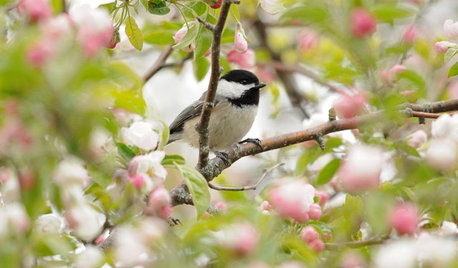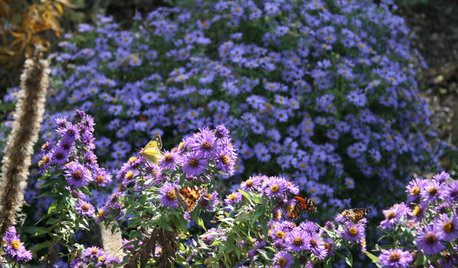Butterfly happy here in Florida
Tom
7 years ago
Related Stories

DECORATING GUIDESHouzz Tour: Happy Days Are Here Again in a Miami Apartment
The colors of Biscayne Bay, an owner’s fond memories and the groovy spirit of the 1970s inspire a bright redesign
Full Story
PETSHere’s How to Show Your Pet Even More Love
February 20 is Love Your Pet Day. Find all the ideas and inspiration you need to celebrate right here
Full Story
MOST POPULARSpring Gardens Are Blooming — Here’s What to Do in April
Get the guide you need for gardening in your U.S. region, with tasks, climate-appropriate plantings and more
Full Story
FALL GARDENINGWhat Monarch Butterflies Taught Me About Garden Design
Thinking like a butterfly leads to fresh perspectives in the garden and in life
Full Story
MOVINGRelocating? Here’s How to Make the Big Move Better
Moving guide, Part 1: How to organize your stuff and your life for an easier household move
Full Story
SPRING GARDENINGSpring Gardens Are Waking — Here’s What to Do in March
Excitement fills the air when gardens come back to life. These guides will help you make the most of yours
Full Story
CONTAINER GARDENSHappy Houseplants, Happy People
Potted plants add life and beauty to a room. Learn easy ways to keep them healthy
Full Story
FEEL-GOOD HOMEWhat Really Makes Us Happy at Home? Find Out From a New Houzz Survey
Great design has a powerful impact on our happiness in our homes. So do good cooking smells, family conversations and, yes, big-screen TVs
Full Story
FLOWERS15 Native Flowers That Attract Butterflies
By picking plants from this list that are right for your location, you’ll get colorful blooms and support pretty pollinators
Full Story
HOUZZ TOURSHouzz Tour: Butterfly Roofs Top a Sydney Terrace House
Modern remodel retains 19th century facade while pouring natural light into new and old spaces
Full StorySponsored
More Discussions




Jacob Berg
TomOriginal Author
Related Discussions
North Central Florida Butterflies
Q
Julia butterfly: How far north in Florida?
Q
Happy Thanksgiving, Florida Gardeners!
Q
Happy First Day of Spring, and I bring you Butterflies!
Q
Jacob Berg
angelimperfect36
TomOriginal Author
MissSherry
TomOriginal Author
four (9B near 9A)
TomOriginal Author
Jacob Berg
MissSherry
TomOriginal Author
four (9B near 9A)
four (9B near 9A)
TomOriginal Author
MissSherry
angelimperfect36
TomOriginal Author
angelimperfect36
four (9B near 9A)
TomOriginal Author
angelimperfect36
MissSherry
four (9B near 9A)
TomOriginal Author
four (9B near 9A)
four (9B near 9A)
TomOriginal Author
four (9B near 9A)
four (9B near 9A)
MissSherry